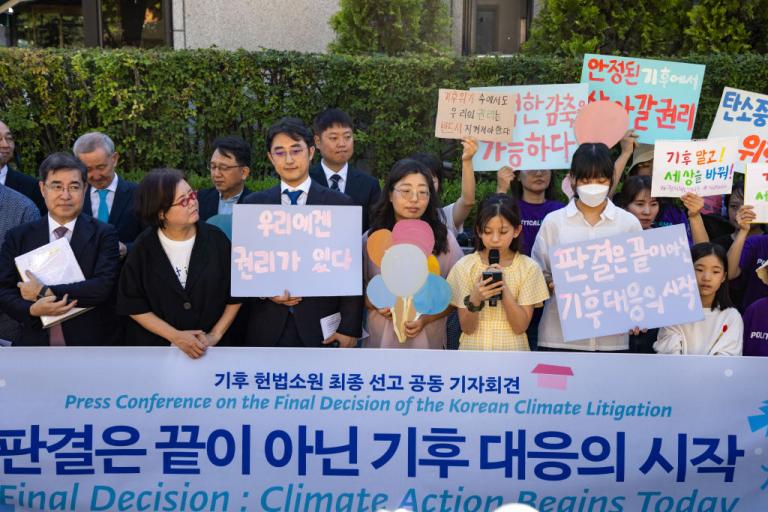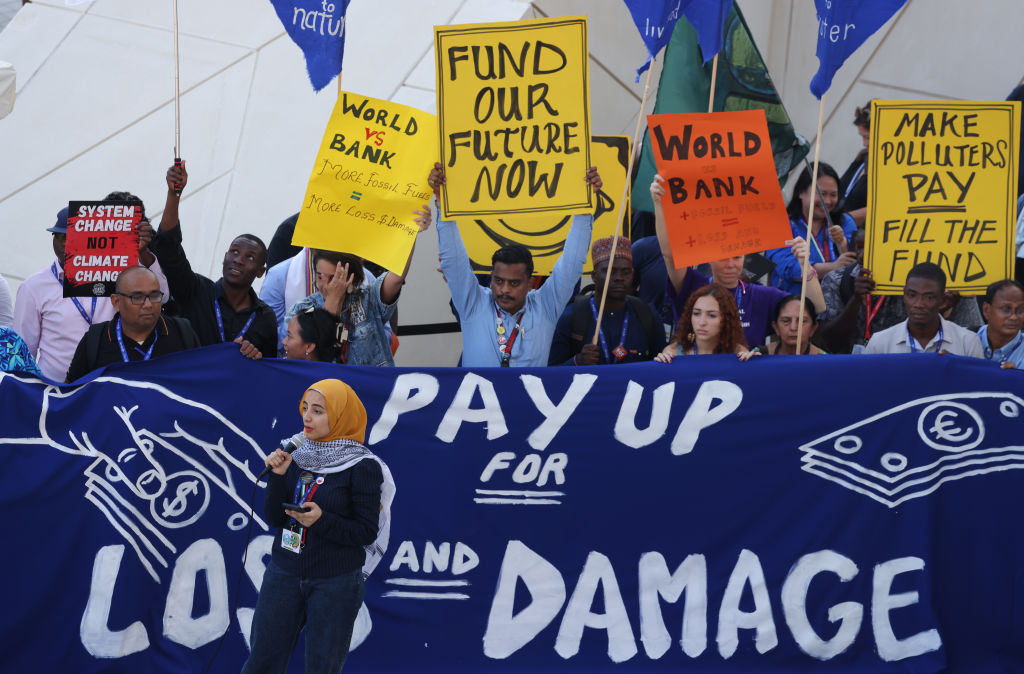At the annual United Nations climate conference in Dubai last year, the world’s countries launched a long-awaited fund for global climate reparations. This so-called loss-and-damage fund, which is supposed to compensate developing countries for the unavoidable harm wrought by climate change, received more than $650 million in pledges during the conference. It was lauded as a historic commitment to climate justice.
The fund’s strongest advocates — small island nations, African countries, and climate justice activists — intended it to help the poor nations that have been hit hardest by climate change pay for the many billions of dollars in damage that their negligible carbon emissions did little to cause. They argued that early-industrializing wealthy countries, which have emitted the lion’s share of carbon emissions historically, have a moral imperative to support developing nations coping with the effects of climate change.
But in the nearly 10 months since the U.N. conference, the fund hasn’t raised much beyond the initial $650 million pledge, save for an $11.7 million pledge from Austria and a $7 million announcement from South Korea. Other wealthy nations have stayed largely silent on the subject of additional donations to the fund. And now that the spotlight is turning to other high-profile climate finance issues at COP29, the upcoming U.N. climate conference in Baku, Azerbaijan, loss and damage advocates are starting to conclude that additional pledges to the fund are unlikely for now.
“A lot of us hoped that more countries would have come in,” said Liane Schalatek, the associate director of the Washington, D.C., office of the Heinrich Böll Foundation, an independent organization associated with the German Green Party. “A lot of the developed countries take a kind of wait-and-see approach.”
The nearly $680 million total pledged to the loss-and-damage fund is a tiny fraction of what’s needed to cover the costs that the developing world has incurred due to climate change it largely did not cause: Researchers have estimated climate-induced loss and damage will cost as much as $580 billion per year by 2030.
The fact that loss-and-damage pledges have dried up since COP28 does not mean that progress toward getting money to countries in need has totally stalled, however. Representatives of both developed and developing countries have agreed on some contentious decisions required to make the fund a reality: the nomination of board members to oversee the fund, the choice of the World Bank as the fund’s institutional home, and the selection of the Philippines as the fund’s host country, which is required to give the board the legal capacity to work with the World Bank. Most recently, the board hired Ibrahima Cheikh Diong, a Senegalese and American national with experience working at public and private banks, as the executive director of the fund.
“Procedurally, this is quite a feat,” said Schalatek. “The board has actually been able [to fulfill its duties] and that was honestly quite doubtful.”
Still, several key questions remain open, including the size of the fund and how it will solicit additional resources. The loss-and-damage fund is just one of a handful of environmental funds hosted by the World Bank, and each has a different process for raising capital. The Global Environment Facility, which funds a range of environmental projects tackling biodiversity loss, pollution, and climate change, is replenished every four years. During the replenishment cycle, the World Bank actively fundraises, urging donors to pledge funds. Other climate funds hosted by the World Bank, however, have no replenishment schedule. In those cases, fund managers continuously fundraise in annual cycles in an attempt to secure resources for the following year.
The vague wording of the loss-and-damage agreement appears to split the difference between these approaches: In the decision finalizing the loss-and-damage fund, U.N. member countries agreed that the fund “will have a periodic replenishment every four years and will maintain the flexibility to receive financial inputs on an ongoing basis.” While this appears to provide maximum fundraising flexibility, it could also give donor countries cover for sitting on the sidelines for years at a time — especially given that no agreement has been reached on the total dollar amount required by the loss-and-damage fund, and that all pledges are voluntary.
Schalatek is particularly disappointed that wealthy countries such as the United States and Japan — which initially pledged just $17.5 million and $10 million, respectively — haven’t announced additional pledges considering the size of their economies and relative responsibility for causing climate change, given their high per capita carbon emissions.
“$680 million does not last that long,” said Schalatek.
At COP29 next month, countries will be jostling over an overarching climate finance goal that will encompass not just loss-and-damage payments, but also adaptation funding and financing for the energy transition. Decarbonizing the world will take nearly unfathomable amounts of money, and wealthy countries are again expected to fork over funds to help developing countries make the shift to cleaner energy sources. Developed countries have so far largely resisted including finance goals for loss and damage in conversations about what this total dollar figure — which is known as the New Collective Quantified Goal — should be.
Despite these open questions, the loss-and-damage fund is still expected to start doling out money next year. Schalatek said the board need not wait to have all its operational procedures in place before it begins disbursing funds. For instance, the fund is already capable of providing direct support to the national budgets of countries that need it, instead of trying to route the funds to specific communities or organizations, which would likely require more bureaucratic procedures to be agreed upon.




